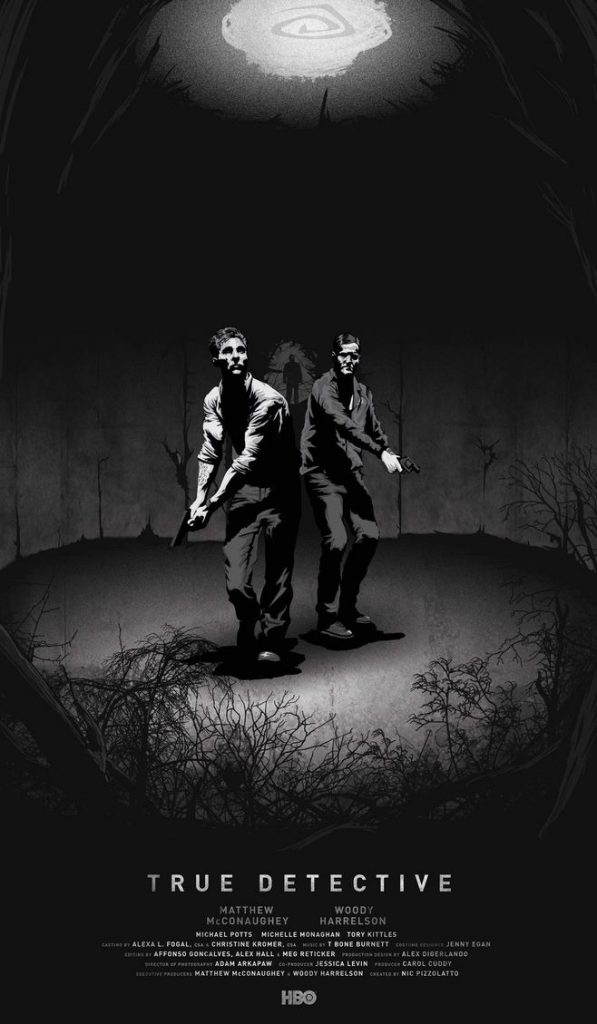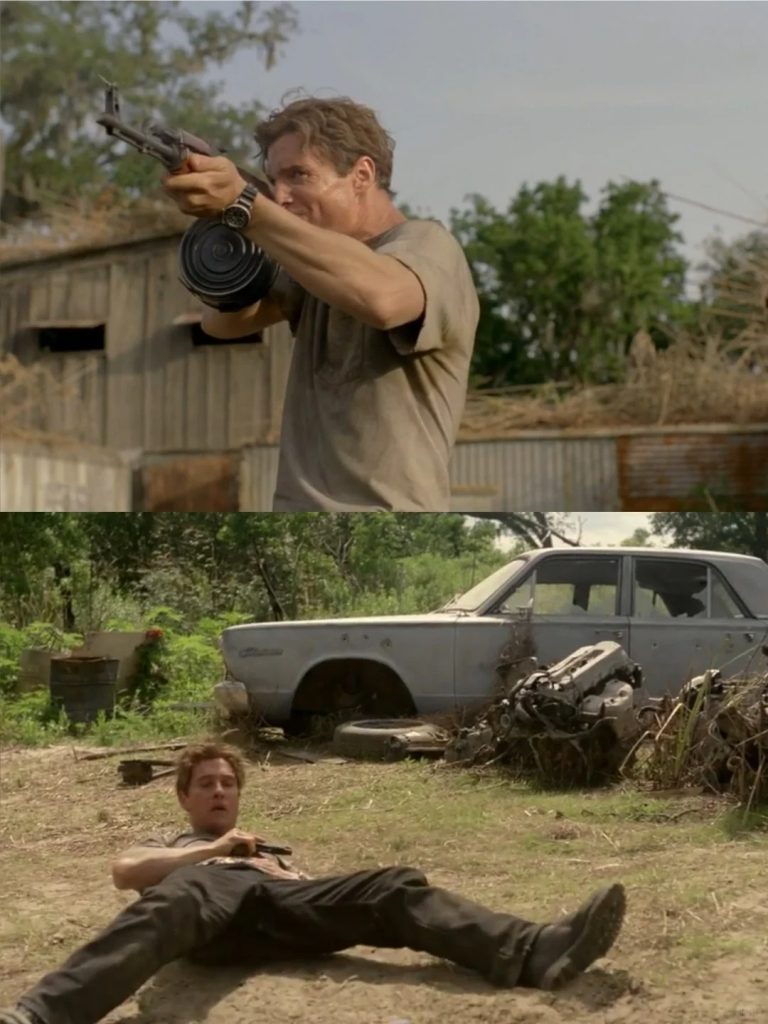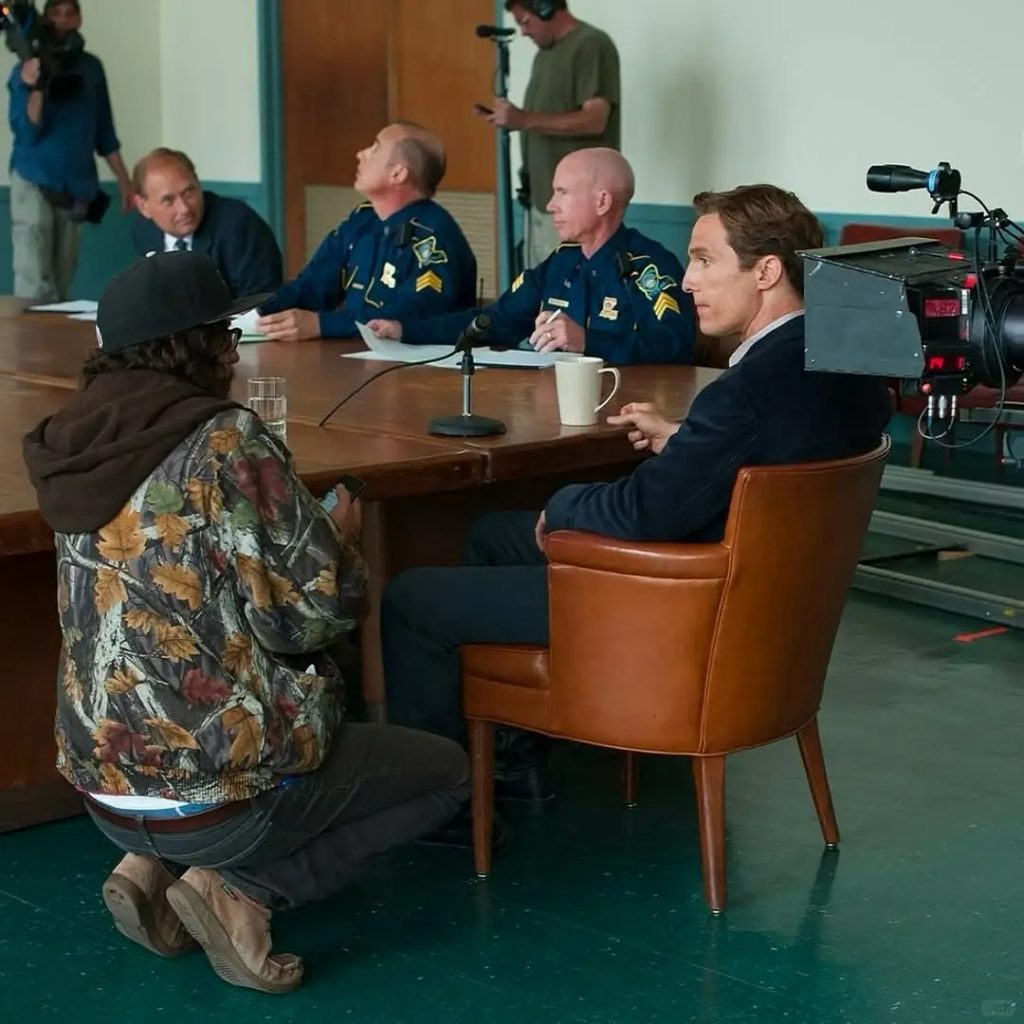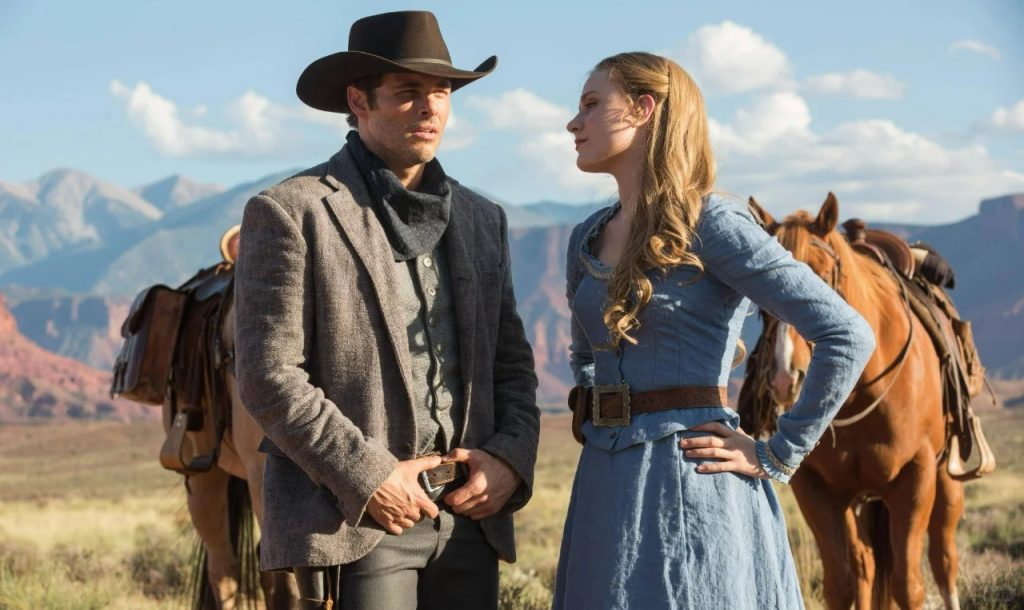True Detective Season 1 Deep Dive: Matthew McConaughey’s Masterpiece and the Perfect Fusion of Lovecraftian Horror
terehiatheatre // Episode 2025-04-30

Since its premiere in 2014, True Detective Season 1 has been widely regarded as one of HBO’s—and television history’s—greatest achievements. Starring Matthew McConaughey and Woody Harrelson, this crime mystery series captivated audiences with its unique narrative style, profound philosophical themes, and seamless incorporation of Lovecraftian horror elements, earning a stellar 9.3 rating on Douban. This article delves into the plot, character development, costume design, Lovecraftian influences, and distinctive cinematography of True Detective Season 1, revisiting what makes this series a true masterpiece.
True Detective Season 1 follows two contrasting detectives—Rust Cohle (Matthew McConaughey) and Marty Hart (Woody Harrelson)—as they investigate a ritualistic serial murder case tied to occult beliefs. The story unfolds across two timelines: one in 1995, tracking their original investigation, and another in 2012, where they are separately interrogated as the case is reopened.
In 1995, Louisiana is shaken by the grotesque murder of Dora Lange—a young woman posed in prayer, wearing a deer-antler crown, with a spiral symbol painted on her back. As Cohle and Hart dig deeper, they uncover connections to a cold case from 17 years earlier, hinting at a vast, sinister cult. Throughout the investigation, both detectives grapple with personal demons—Cohle’s grief over his daughter’s death and Hart’s crumbling marriage.
The brilliance of the show lies in its fusion of detective noir with existential philosophy. Cohle frequently delivers nihilistic monologues, such as “I think human consciousness is a tragic misstep in evolution,” which have since become iconic among fans. As the case progresses, Lovecraftian elements—references to “The Yellow King” and “Carcosa”—emerge, adding an eerie, supernatural dread.
By 2012, the estranged detectives reunite to finally expose the truth. The season’s climax sees Cohle experiencing a near-death vision of “the universe as a vast, dark void,” perfectly mirroring his philosophical musings.
Character Analysis: Matthew McConaughey’s Career-Defining Performance
The success of True Detective Season 1 owes much to McConaughey and Harrelson’s powerhouse performances, crafting one of TV’s most compelling detective duos.
Rust Cohle (McConaughey) is a deeply complex character—a former undercover narcotics officer haunted by his daughter’s death, divorced, and battling addiction. A loner obsessed with existential philosophy, Cohle approaches cases with obsessive precision, often bending rules in pursuit of justice. McConaughey’s haunting portrayal—marked by his gravelly voice and piercing gaze—elevates the role, particularly in his extended interrogation monologues, which are masterclasses in acting.
Marty Hart (Harrelson) serves as the more conventional detective—a seemingly devoted family man masking his infidelities and inner emptiness. Hart embodies societal norms, contrasting sharply with Cohle’s nihilism. Harrelson delivers a nuanced performance, making Hart both flawed and sympathetic.
Their evolving dynamic—from initial friction to reluctant trust, bitter estrangement, and eventual reconciliation—is the series’ emotional core. Their chemistry remains unmatched in crime drama history.
The true villain, “The Yellow King,” never physically appears but looms through symbols, lore, and victims’ accounts—embodying Lovecraftian horror’s essence: “The oldest and strongest emotion of mankind is fear, and the oldest and strongest kind of fear is fear of the unknown.”

Costume Design: Visual Storytelling Through Wardrobe
Costume designer Jenny Eagan’s work in True Detective Season 1 subtly reflects character psychology.
Professional Attire:
-
Cohle wears unbuttoned Oxford shirts with rolled sleeves, rejecting conformity.
-
Hart opts for traditional suits, mirroring his struggle between duty and desire.
Field Work:
-
Cohle’s rugged corduroy jackets emphasize his brooding intensity.
-
His undercover biker look—a nod to Marlon Brando in The Wild One—hints at his rebellious nature.
2012 Reunion:
-
Cohle’s disheveled appearance reflects his nomadic life.
-
Hart’s maintained professional look shows his clinging to normalcy.
These details enrich the storytelling, making the characters feel lived-in and real.
Lovecraftian Horror: The Hidden Cosmic Terror
True Detective Season 1’s genius lies in blending detective noir with Lovecraftian horror.
Carcosa, first mentioned in Ambrose Bierce’s An Inhabitant of Carcosa, is depicted as a desolate, otherworldly city where the cult performs rituals. The final maze-like stone structure embodies this myth.
The Yellow King, from Robert W. Chambers’ The King in Yellow, is referenced in Dora Lange’s diary—an unseen entity driving madness. This “unnamable horror” is classic Lovecraft.
The show implies that The Yellow King is Hastur, Cthulhu’s half-brother and rival, with Carcosa as his domain. This deep-cut mythology appeals to both crime and cosmic horror fans.
Cinematography & Sound: A Cinematic Achievement
True Detective Season 1 boasts film-quality production.
Visuals:
-
Louisiana’s swamps are shot with eerie beauty.
-
A six-minute single-take action sequence remains a TV landmark.
-
Warm (1995) vs. cold (2012) color grading clarifies timelines.
Music:
-
The haunting theme “Far from Any Road” by The Handsome Family sets the tone.
-
Lyrics about a poisoned man foreshadow the series’ dark themes.
Pacing:
-
Deliberate yet gripping, every frame is loaded with meaning.
-
Shot on film, the visuals have a rich, textured quality.
Philosophical Depth: An Existential Crime Drama
Beyond crime-solving, True Detective is a meditation on existence.
Cohle’s nihilistic quotes—“We are things that labor under the illusion of having a self”—reflect Albert Camus’ “The Myth of Sisyphus.” His worldview clashes with Hart’s attempts at conventional meaning (family, career, affairs).
The finale’s “darkness vs. light” motif suggests that while evil persists, the struggle for truth itself is redemptive. The show offers no easy answers—only questions about justice, guilt, and purpose.
Legacy: Redefining Crime Television
True Detective Season 1 reshaped crime dramas:
-
Popularized anthology series (Fargo, American Horror Story).
-
Influenced visual styles (e.g., The Night Of, Mindhunter).
-
Proved TV could rival literature in philosophical depth.
Though later seasons varied in reception, Season 1 remains untouchable—a perfect blend of mystery, horror, and existential drama.
Conclusion: A Timeless Masterpiece
A decade later, True Detective Season 1 still tops “best mystery TV” lists. Its brilliance lies in:
-
Unforgettable performances (McConaughey’s career peak).
-
Stunning cinematography (iconic long takes, filmic texture).
-
Lovecraftian dread (hints of cosmic horror).
-
Philosophical weight (exploring life’s biggest questions).
For new viewers, it’s essential viewing. For fans, rewatching reveals new layers. True Detective Season 1 isn’t just TV—it’s art, a haunting exploration of darkness, humanity, and the fragile light we cling to.


